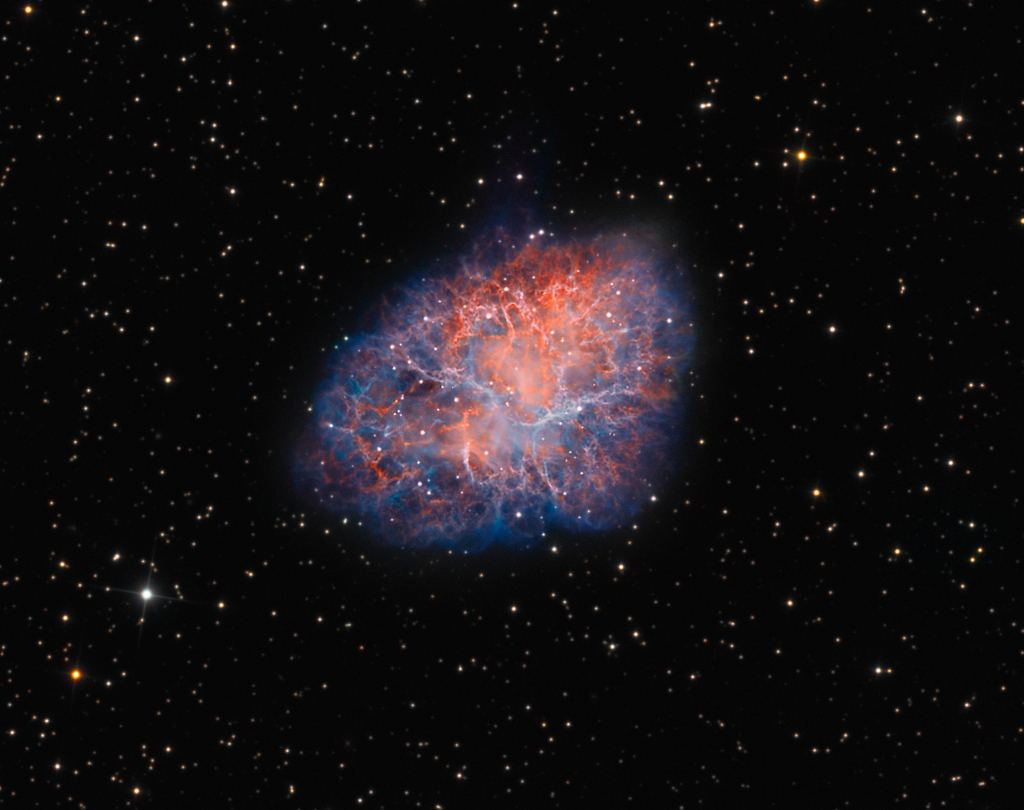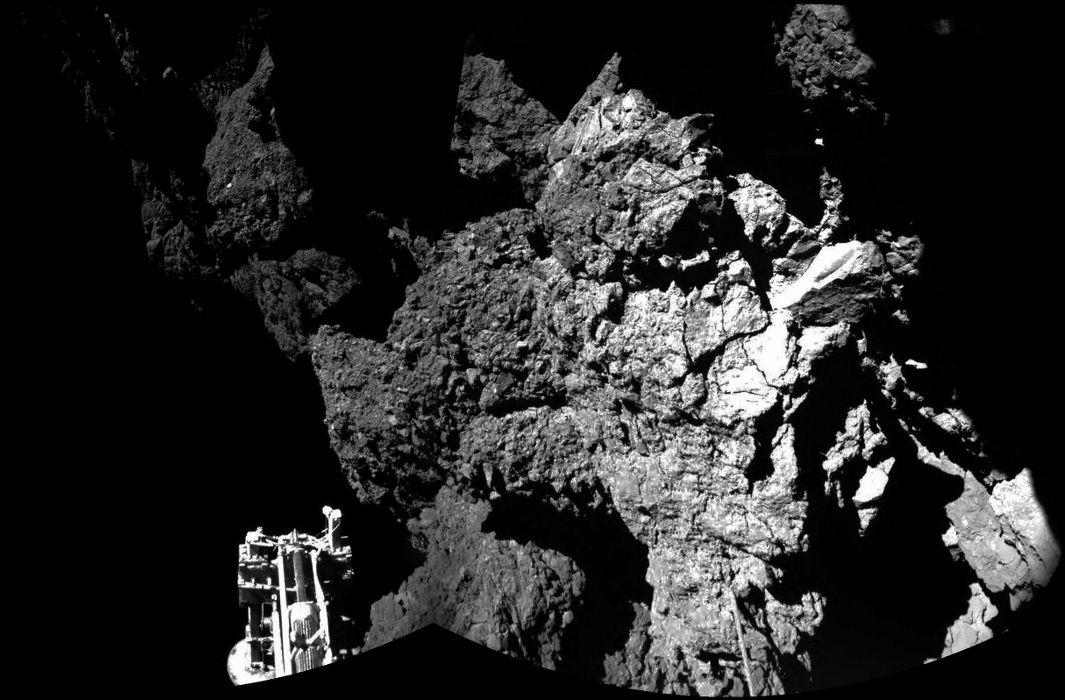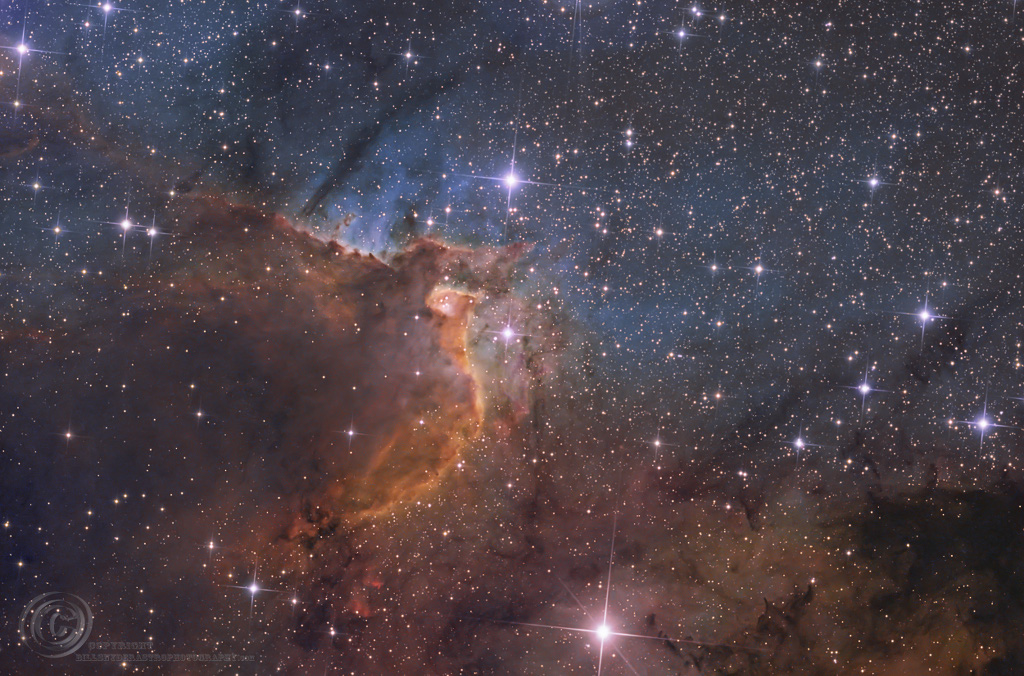In this picture you are looking
at what is called the crab nebula. It is a m1 object of the famous Charles
messier from the 18th century. Messier listed many thing that were not
comments. The crab is supposed to be remnants of a supernova. A supernova is a
explosion of a massive star. The crab pulsar is one of the most exotic objects
for modern day astronomers. A crab pulsar is a neutron spinning 30 times a
second and is viable as bright spot near the center. This nebula spans about 12
light years and is about 6500 light years away in the constellation Taurus .


